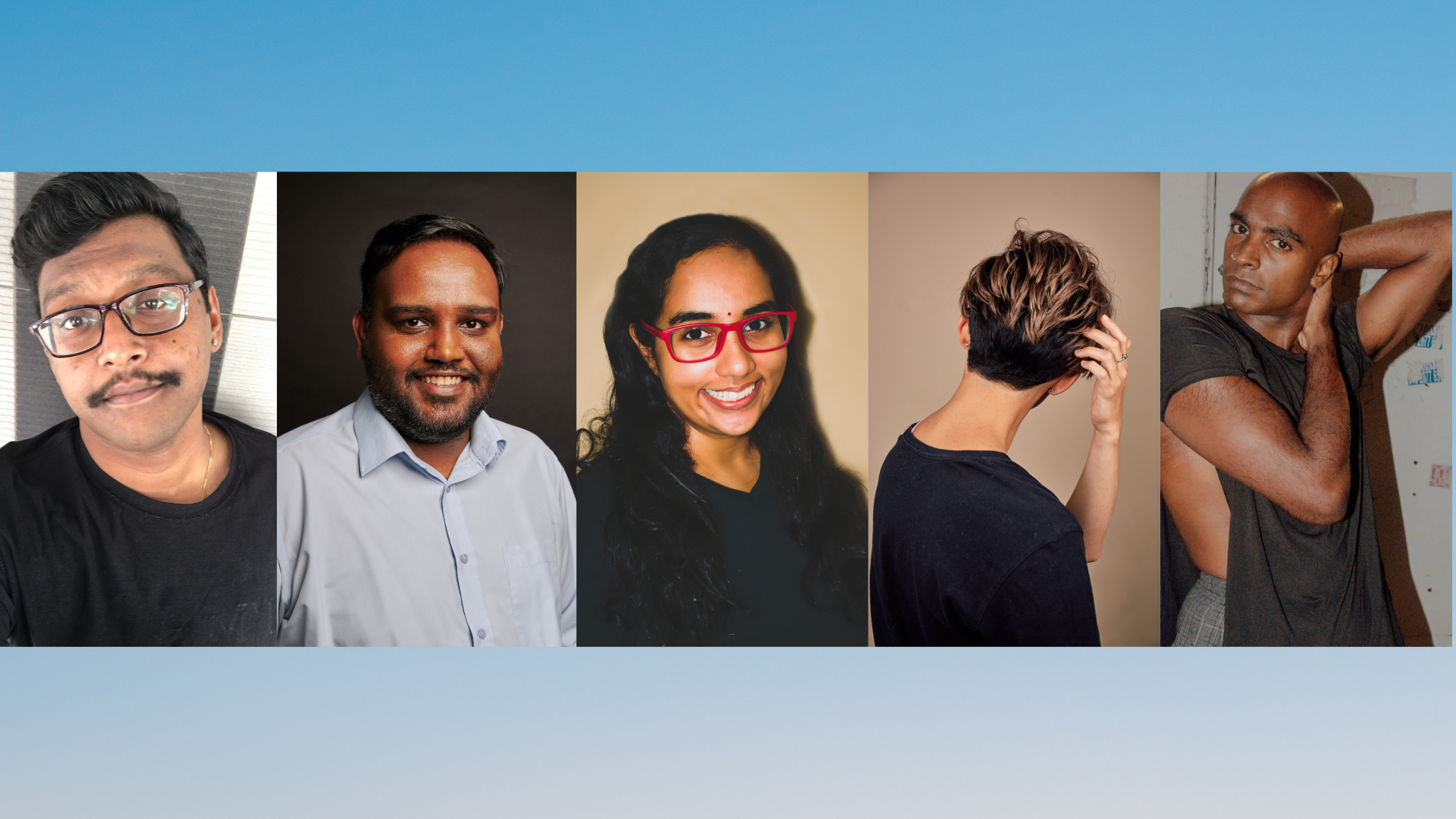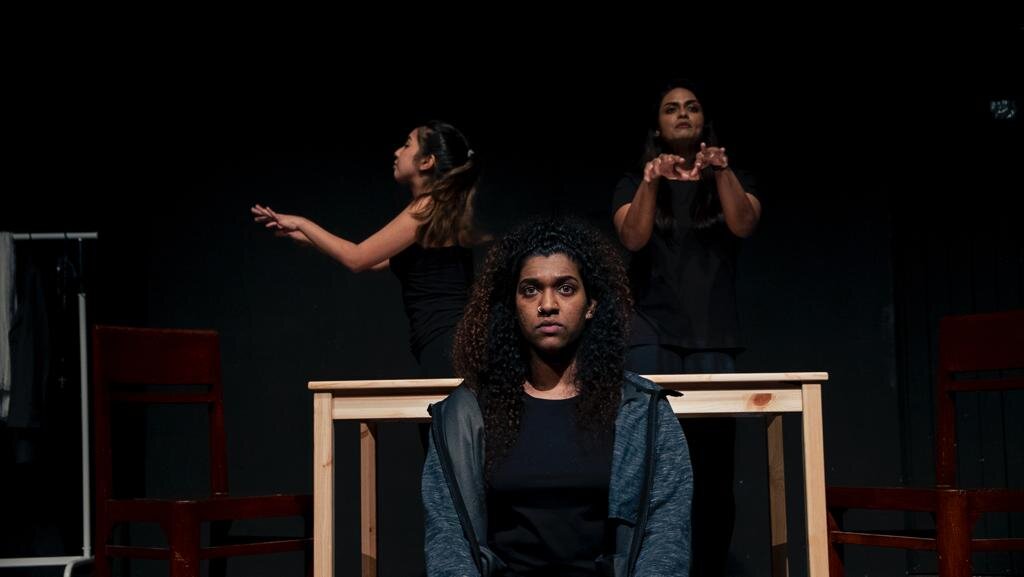Masc4Masc: An Artistic Conversation on Brown* Masculinity
In an artistic conversation across mediums and geography, five artists discuss brown masculinity and reflect on the way it intersects with their artistry and personal lives.
/ Article by Dhinesha Karthigesu
Theyvapaalan S Jayaratnam (left) in Skin and Flowers (2018). Picture courtesy of Ali Motamedi.
Rajkumar Thiagaras in Anything Can Happen/Something Must Happen (2019). Picture courtesy of Wild Rice.
The artists featured (in order of appearance) in this conversation are:
Myself, Dhinesha Karthigesu (He/Him). Kuala Lumpur based multidisciplinary storyteller.
Rajkumar Thiagaras (He/Him). Bilingual Singaporean actor and playwright.
A Yagnya (She/Hers). Singaporean collaborative theatre maker and Japanese translator.
Naomi (They/Them). Amateur Singaporean actor who has enjoyed dabbling in improv and physical theatre.
Theyvapaalan S Jayaratnam (They/Them). Malaysian multidisciplinary artist grounding themselves in theatre, photography and film.
*It is important to recognize that within the context of South East Asia, brown can mean a lot of different identities. For the context of this article, I have chosen brown to refer to Malaysians and Singaporeans of Indian/South Asian descent.
Setting: The lights turn on as five artists enter a digital mamak restaurant to makan, talk and be. Over teh tarik and roti canai (sorry prata) the conversation runs the gamut of topics. Identity, representation, frustration and the things they are currently enjoying are all things talked about. In the background, the Masc4Masc Spotify playlist hums along at a low volume. This is a snippet of their conversation.
Dhinesha: Raj, what would you say brown masculinity is to you? If you had to define and explain it?
Rajkumar: Brown masculinity to me is an institution steeped in colonial regression and toxic patriarchy, which requires constant self-checks and balances in order to be self-aware of one’s internal hubris. It is a culture that has sought self-gratification, and has instead perpetuated self-hate. However, there is beauty to be found when we break down our walls and force ourselves to be vulnerable, when we learn from our tragic histories and endeavour to fix our mistakes towards women and marginalised communities, when we face the truth honestly and strive to be better versions of ourselves. What I have learned from my childhood growing up in a middle-class Indian household is that brown masculinity is malleable; we just have to learn to change our form to become more flexible as men, and as human beings.
A Yagnya: Naomi how would you respond to that? How does brown masculinity affect you?
Naomi:
Rajkumar: Yagnya, how do you feel about the traditional structures of it? Do you find yourself questioning and interrogating them?
A Yagnya:
Dhinesha: Does anyone have thoughts to add to that on how you may respond to this notion of brown masculinity in your artistic practice?
Naomi:
Rajkumar: As an Indian thespian, I have tried to redefine what it means to be a man in my latest explorations in queer playwriting, trying to break the mould to create sensitive and nuanced queer brown male characters that embrace their gender fluidity. My personal struggles with my body issues, sexuality and racial bias are reflected in my characters and the ideals they stand for so as to make them relatable to anyone struggling with their gender identity. I’m constantly questioning my artistic choices to make sure they don’t perpetuate the same harmful notions of what it means to be a man. This self-questioning arises when I re-examine mythology, or re-look personal narratives to glean new perspectives on male behaviour and psychology. As such, I make sure that my characters can be held accountable in order to hold myself accountable.
Naomi: How about you Paalan, are there parts of you that you have to negotiate? How do you end up having to show up in your everyday performance in life?
Theyvapaalan:
ITS FEROCIOUS NATURE, RAWNESS AND AMBIGUITY. I KEEP TRYING TO CHASE ITS FORM ONLY TO FIND IT'S OCEAN LIKE SHAPELESSNESS.
Theyvapaalan: Dhinesha, with everything we are talking about, how do we then go about making brown masculinity something we can celebrate?
Dhinesha: I think it begins with having conversations like this. If we don’t make space for ourselves and ask these difficult questions, how can we ever celebrate it? That is not to say that our allies have nothing to do and the burden is all on us. I think our allies and co conspirators in spaces need to-
The Masc4Masc playlist gets louder and louder, drowning out the sounds of the conversation. Laughter can be heard and seen. Slow fade to blackout.
A Yagna (not pictured) was the devising playwright and co-director of subTITLED 1.0. Picture courtesy of The Substation.





